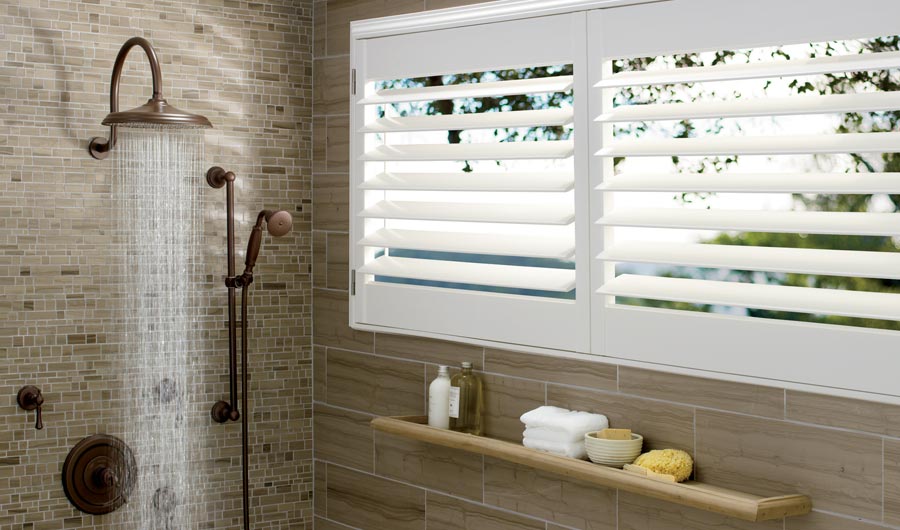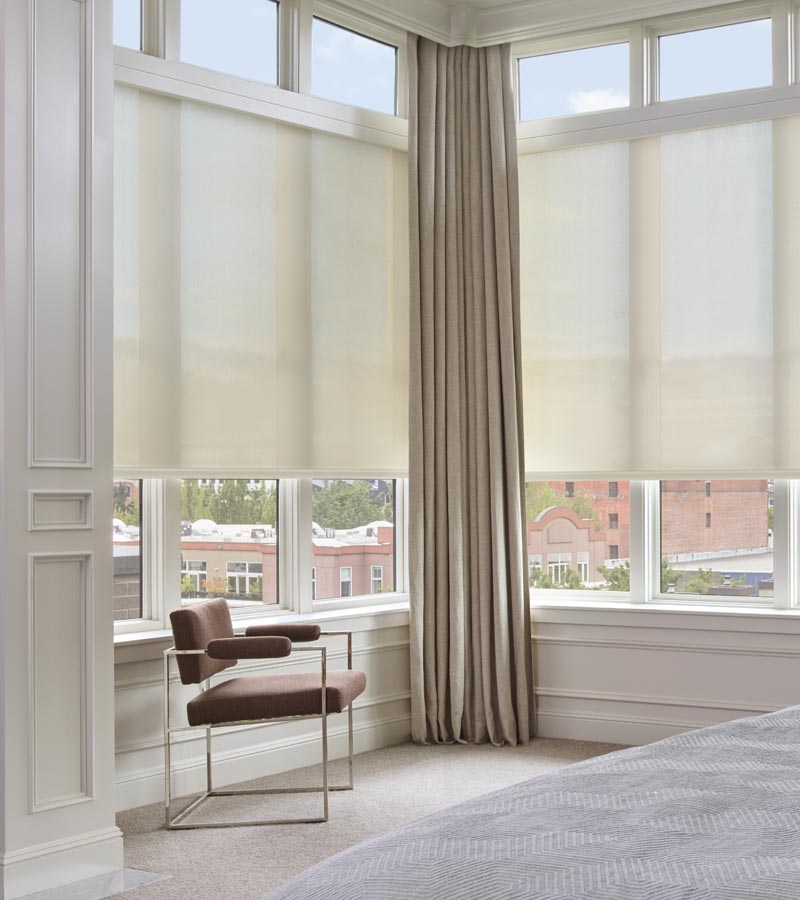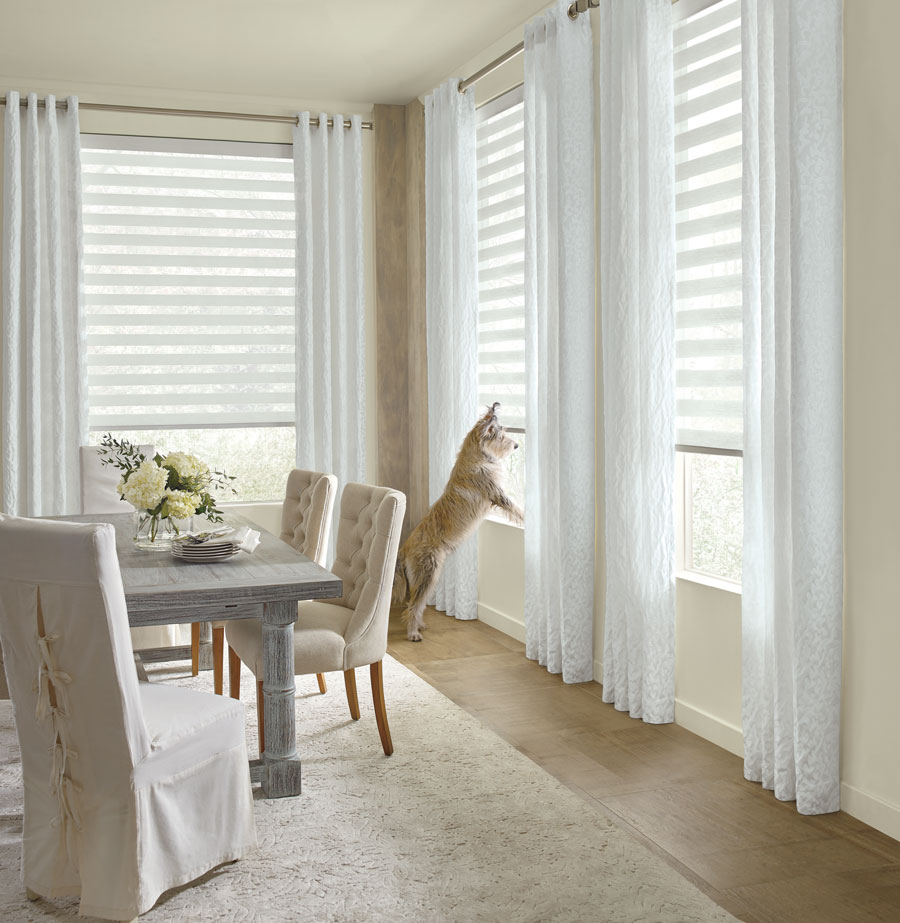Your window coverings adjust beautifully and create the right atmosphere. But what about maintaining the pristine appearance? Like many other elements in your home, cleaning blinds, shades, shutters and drapery should be done regularly to rid your home of dust and allergens.
Keep In Mind
If you purchased your window treatments from a business, it’s important to check with them for the manufacturer recommendations. If you know the manufacturer, or you purchased a self-installed product, you should refer to booklets or tags from the product for cleaning suggestions. Each and every window covering can require different cleaning practices, so it’s best to follow specific instructions.
Cleaning Blinds & Shutters
The materials used to clean shutters and blinds are often similar. This means that the advice offered for cleaning blinds and shutters will sound alike.
- Regular Dusting: This can be done with a handheld duster, cloth or gloves–all made of clean, dry, microfiber fabric. Oftentimes, you can find these window blind cleaning kits with a variety of tools. Close the slats or louvers so they are flat. Dust the shutters or blinds by moving the cloth from side-to-side. You can also adjust the window treatments so they point toward the ceiling to dust the other side. Consider getting an extension dusting kit for hard-to-reach window treatments.
- Small Areas: If you have small areas that are hard to clean, you can use a natural fiber paintbrush, or a clean, dry toothbrush when dusting to keep them looking clean.
If you need to clean tough spots off of your hard treatments, like blinds and shutters, it’s important to be mindful of the materials you are cleaning. Wood, metal or composite blinds and shutters will respond to various cleaning agents differently based on materials.

Window Shades and Fabric Blinds
Keeping the fabrics of window shades, or vertical blinds that are covered in fabrics, clean can be slightly more of a challenge. It’s important to add dusting to your regular cleaning routine. Dust build-up will be more difficult to get rid of, causing dirt and allergens to remain in the atmosphere and compromising the look of your window treatments. For regular cleaning, adjust your fabric shades, or vertical blinds, in the closed position when cleaning, to access as much of a flat surface as possible. Then, consider the following methods:
- Canned Air: This method has become quite popular, especially when cleaning fabric shades, as you don’t have to wipe dust along the fabric, which may cause dust to spread. It also prevents the shades from being pressed during cleaning which can damage the shape of the window coverings. The canned air cleaning method can be used with a canned air rechargeable dusting tool, or with disposable cans of air.
- Vacuum Attachment: This is a proper way to clean fabric window treatments, as long as you have an upholstery attachment, along with a low setting available on your vacuum. This versatile vacuum cleaner offers a sliding setting for adjustable suction control, as well as two variations of upholstery cleaning tools.
- Microfiber Cloth, Duster or Gloves: A duster, gloves or clean, dry microfiber cloths are used to dust fabric window shades, similar to cleaning blinds and shutters. Close your window coverings, and dust from side-to-side for horizontal shades and top to bottom for vertical. This method should only be used for regular cleaning. Be careful–if there is a build-up of dust, cleaning may drag additional dust across the fabric.
- Spot Cleaning Fabrics: If you have visible dirt on your fabric shades, you can try spot cleaning. Use a sponge with lukewarm water. Lightly wet the sponge, just enough to dampen, squeezing it to ensure there are no drops of water. Wipe the window shades gently. Let your fabric shades dry completely before rolling them or stacking them.

Cleaning Draperies and Curtains
It’s important to know what type of fabric your draperies or curtains are made of so you can follow the appropriate cleaning method. While there are some fabrics that can withstand the washing machine, most draperies will need to be dry cleaned to avoid shrinking.
- Check local online listings for drapery dry cleaning near your home to inquire about costs.
- Steam cleaning draperies while they remain hanging in place can be a good way to get rid them of dust, while letting your draperies dry as soon as you’re finished.
- Wetting the drapery fabrics can cause bleeding of the colors. You can test a small section of fabric in an inconspicuous area to check your specific drapes.
- If you decide to machine wash your curtains, choose cold water set on a delicate cycle. Remove the washed curtains from the machine immediately to hang dry or lie flat to dry. Ironing settings should be chosen based on your specific fabrics.

Pet Dander Dilemma
Oh, those furry friends. They tend to leave pet dander everywhere–often noticeable on drapes that are positioned close to–or even touching–the floor. Keep in mind: Certain types of fabrics do attract fur more than others. If you’re vacuuming the room, it’s a good idea to raise the curtains above the floor, avoiding flyaway fur to cling to the fabric in midair. After vacuuming is complete, use a low suction, or upholstery attachment to remove any additional fur. Another tip? Keep a lint roller on-hand to get rid of small amounts of fur quickly.

Window treatments are a common design element in homes, and they should be properly cared for. Remember to reach out to the manufacturer, or your local window coverings dealer where you purchased them, to find out the best recommendations for your specific products. If our team, at Skyline Window Coverings, customized the window treatments in your home, we’d love to help. We can offer advice and suggestions for cleaning blinds, shades, shutters and drapery. Get in touch with us today!

